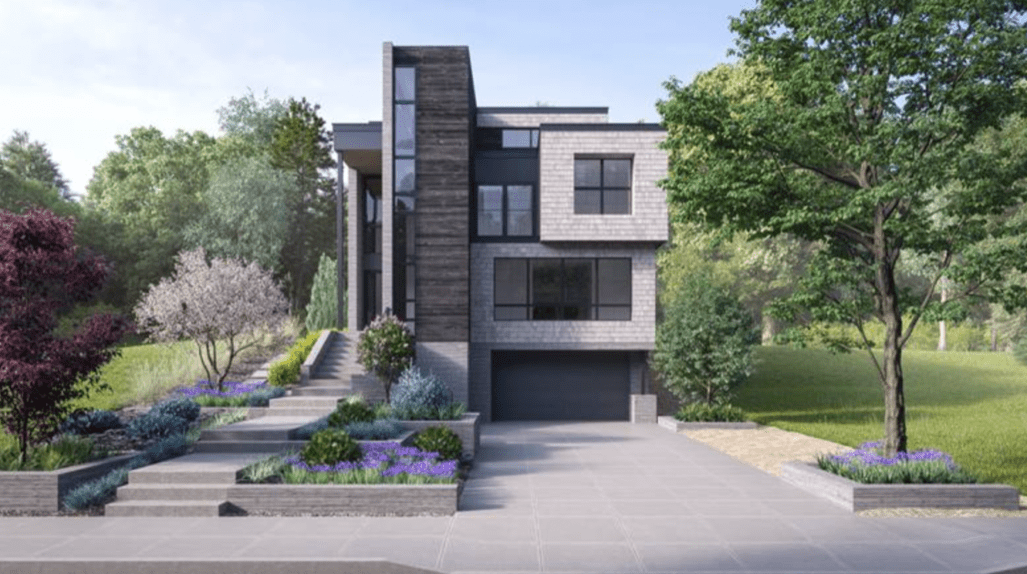They were all influencers to the owners, Janet and Joe Bunge, whose design incorporates the aesthetics of all of these modernists. Janet took the lead on the project and through frequent meetings with the architect Mike Wentz and the design team at Aubrie Welsh Interiors, the home came to life.
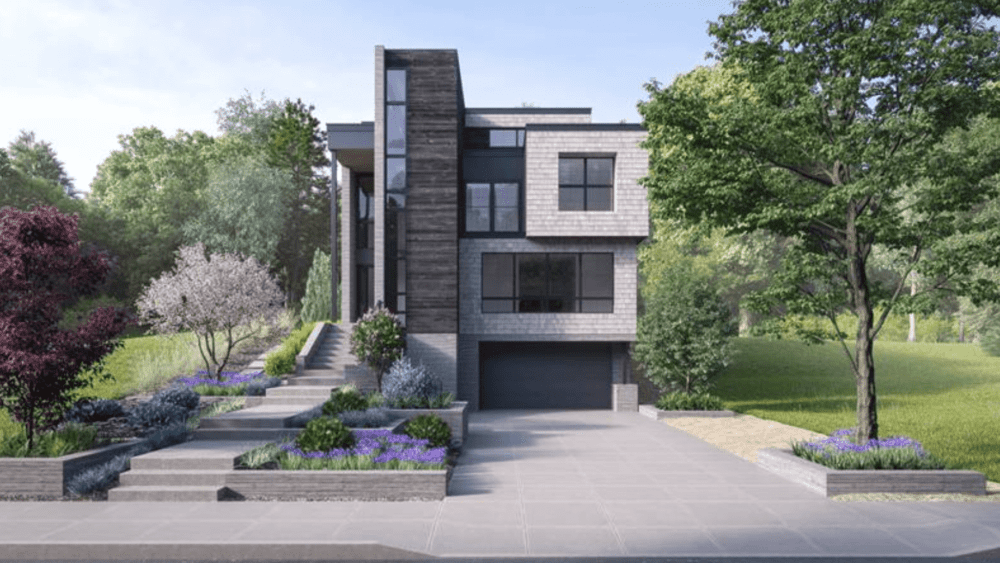
Blurring the lines between inside and outside is a major organic architecture principle of Frank Lloyd Wright and you certainly get that feel by the lot which inspired the couple to build at that location. A natural amphitheater is formed by the Hyde Park Country Club’s golf course and the home’s huge expanse of glass, asymmetrical patio and unexpected wall heights make the transition to the course.

When visitors enter the home, they are greeted by a two-story column with an oculus skylight that was in perfect alignment as I took these photos. The home’s core is like a sundial, perhaps inspired by Louis Kahn’s Philip Exeter Academy Library or his National Assembly Building of Bangladesh which incorporate the sun’s path in their design. It was Janet’s idea, giving the home the characteristics of an optical instrument you live in.
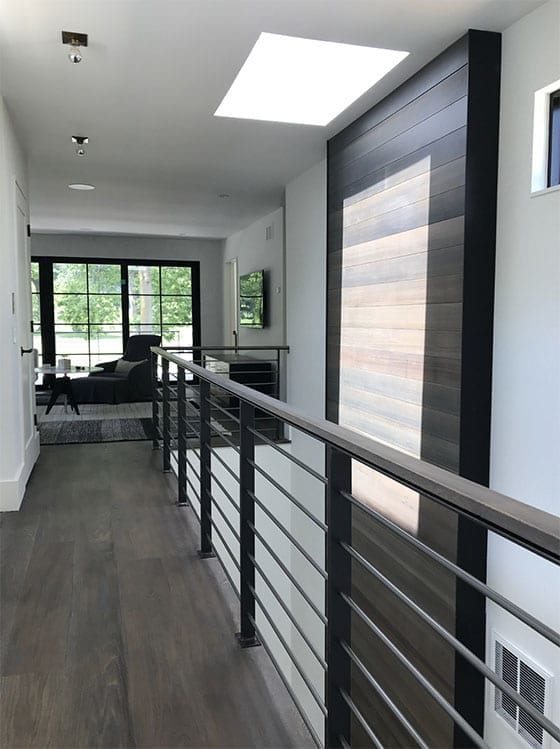
IM Pei was known for very successful projects that met the client’s needs and not one’s of a Star-A-Tech. The Bunge Residence is perfectly matched to their unique needs and includes features like a catering kitchen to manage entertaining without everything being out in the open. The transitions from room to room start with beautiful dining room table showcased at the front of the home. Perfect for that first impression for your guests’ eyes to get a taste of the evening instore.
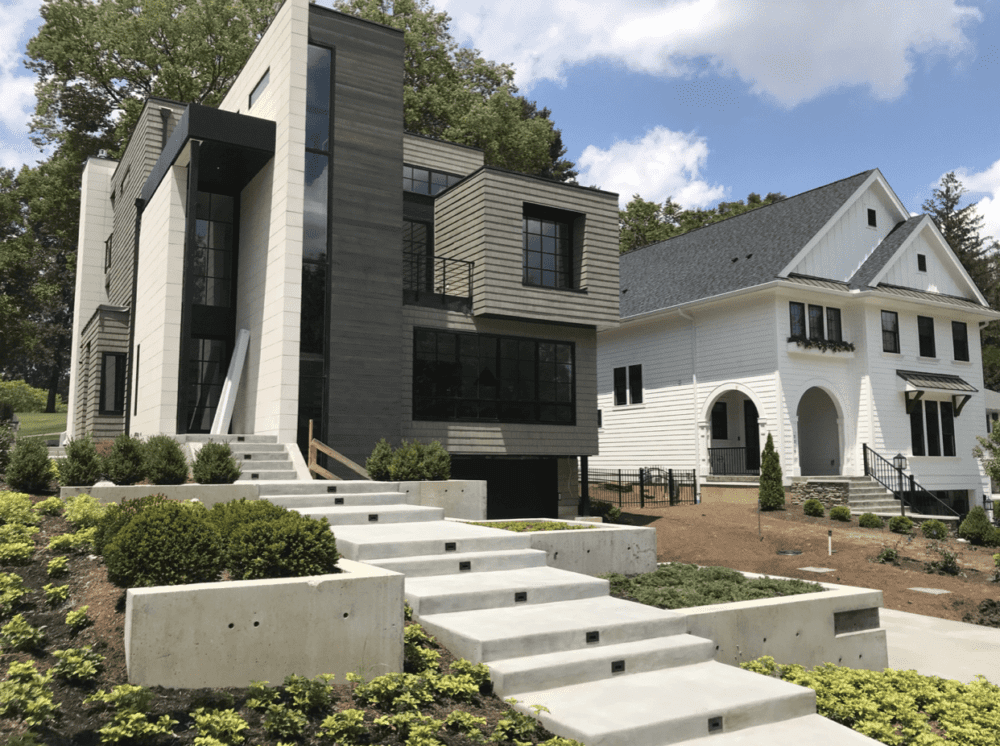
Judging by the Lois and Richard Rosenthal Center for Contemporary Art by Zaha Hadid in downtown Cincinnati, the homes use of “as cast” concrete is a contrast to the glass.
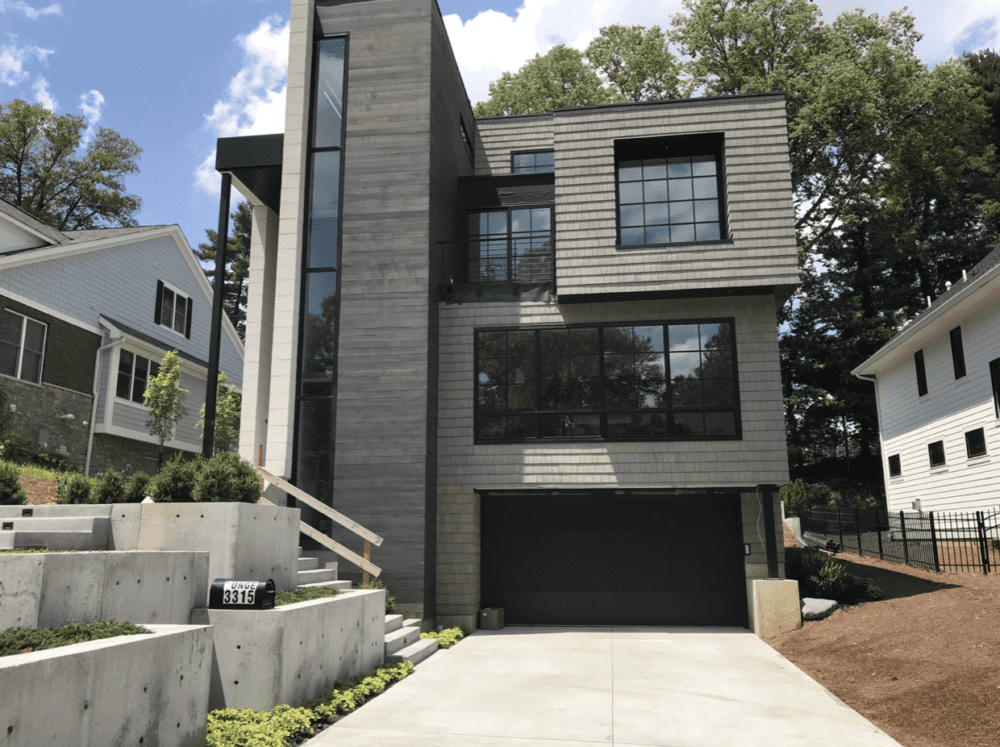
Finally, Annabelle Selldorf’s use of common materials in unconventional ways may be the inspiration for the use of cedar shingles and planks over 90% of the façade. A way to help the home blend into the typical, two story, tan stucco four-squares that represent the 1960s traditional neighborhood.

To finish it off, the home is detailed by artwork curated by their son who is the director of a modern art gallery in New York, Bookstein Projects. Many of the rooms haven’t found their piece yet, the Bunge’s are waiting for the spaces to decide over time, what, if any message, they can enhance.
LEED Platinum is the highest level of LEED and it requires you to be at the top of your game for all the points.
Achieving LEED Platinum isn’t an easy thing to do in any size home. Normally it requires solar panels and a rainwater catchment system.
This home in the Hyde Park neighborhood of Cincinnati has a super-efficient HVAC system, an energy recovery unit for more fresh air without the cost to heat or cool it, and super air sealing for a low draft home environment.
Cincinnati history of tax abatements
Since 2002, the city of Cincinnati has granted 10-year tax abatement on structures. In 2007, the city added an additional five years to the tax abatement for those receiving LEED Certification. The current incentives are that owners must achieve LEED Certified to receive a tax break on the first $285,000 the structure’s value, LEED Silver $400,000, LEED Gold $562,000, and it’s unlimited if you achieve LEED Platinum. Because of the tax abatement, nearly every new home in Cincinnati is LEED Certified and builders have become quite familiar with how to do it cost effectively.
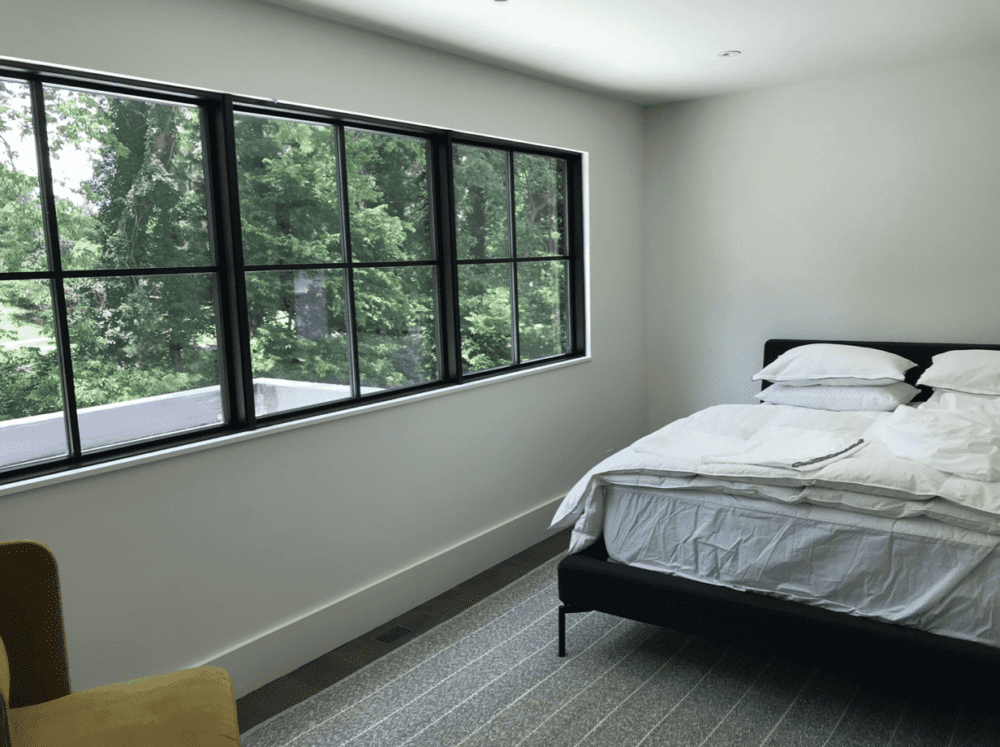
Certification level decision story – LEED for Homes
The LEED for Homes Rating System provides a basis for quantifying the benefits of green homes, thereby facilitating the widespread construction of more sustainable homes. One of the first steps in planning a LEED home is to adjust the certification thresholds based on the material and energy impacts. All else being equal, a large home consumes more materials and energy than a small home over its lifecycle. LEED compensates for these impacts by adjusting the thresholds for each award level. Thresholds for smaller-than-average homes are lowered, and thresholds for larger-than-average homes are raised. A home’s threshold for LEED Gold may be 72 points. A 4,500-sq.-ft. home with five bedrooms would be about 85 points.
In the end, the homeowner will have a well built and third-party certified home. Passing the blower door test alone is significant. Blower door tests are used to prove the air sealing quality of the construction. During the test the home is depressurized to -50 Pascal and measurements are recorded throughout the home to verify that outside air isn’t leaking into the home at a rate higher than required. It proves the home won’t be drafty and uncomfortable. Contrary to those builders who tell home owners that homes need to breathe for fresh air, it is much better to control the ventilation rather than allowing shoddy construction and leaky vapor barriers to supply fresh air to the home. This home is expected to achieve a Home Energy Rating System score of 59, which means it performs 41% better than a baseline home. The home’s 2” x 6” wall system allows for added insulation. The Bunge residence is shooting for a HERS 49 rating. That’s hard to do without solar panels. The homes tight envelope with only 2.16 air changes per hour and high efficiency appliances makes up for that.
The LEED Certification system is broadly categorized into five equally important parts that demonstrate measurable environmental benefits: Site, Water, Energy, Materials, and Indoor Environment Quality. The following is a review of the features of this home according to the LEED for Homes system.
Prerequisites include building above the 100-year floodplain, not habitat for endangered species, built no closer than 100 feet to water or wetlands, land that wasn’t a public park and land that doesn’t have prime farmland, unique or soils of state significance. Excavated topsoil was reused; runoff was controlled, so it didn’t contaminate storm water sewers or erode hillsides.
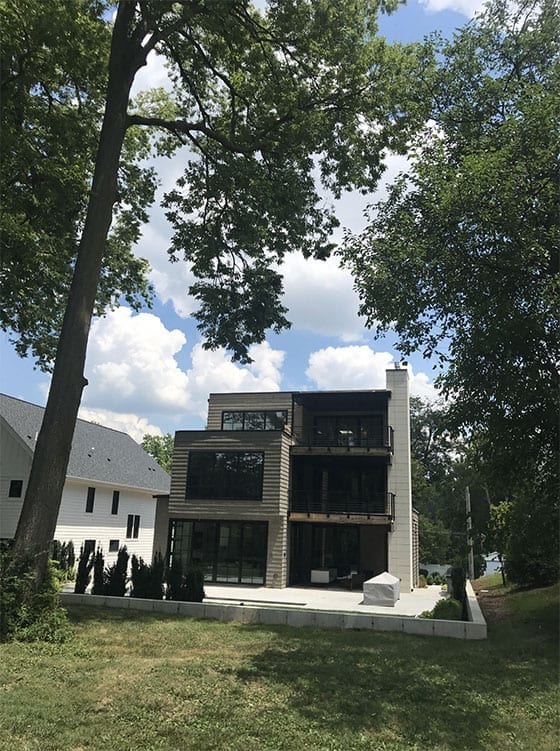
Innovation and Design Process
The Innovation and Design Process section of LEED includes Integrated Project Planning, which maximizes opportunities for integrated, cost-effective adoption of green design and construction strategies.
A Preliminary Rating is arrived at as early a practical, they conducted a preliminary LEED for Homes meeting, with the participation of the key members of the project team and Green Building Consultants (the LEED for Homes Certification Provider) to target the level of LEED, select credits and assign the parties accountable.
The Integrated Project Team typically includes holding monthly meetings to review project status, introduce new team members to the project goals, discuss problems encountered, formulate solutions, review responsibilities and identify next steps. The Integrated Project Team is formed to maximize the opportunities for integrated, cost-effective adoption of green design and construction practices.
A big help with this is that at least one principal member is a Professional Credentialed with respect to LEED for Homes.
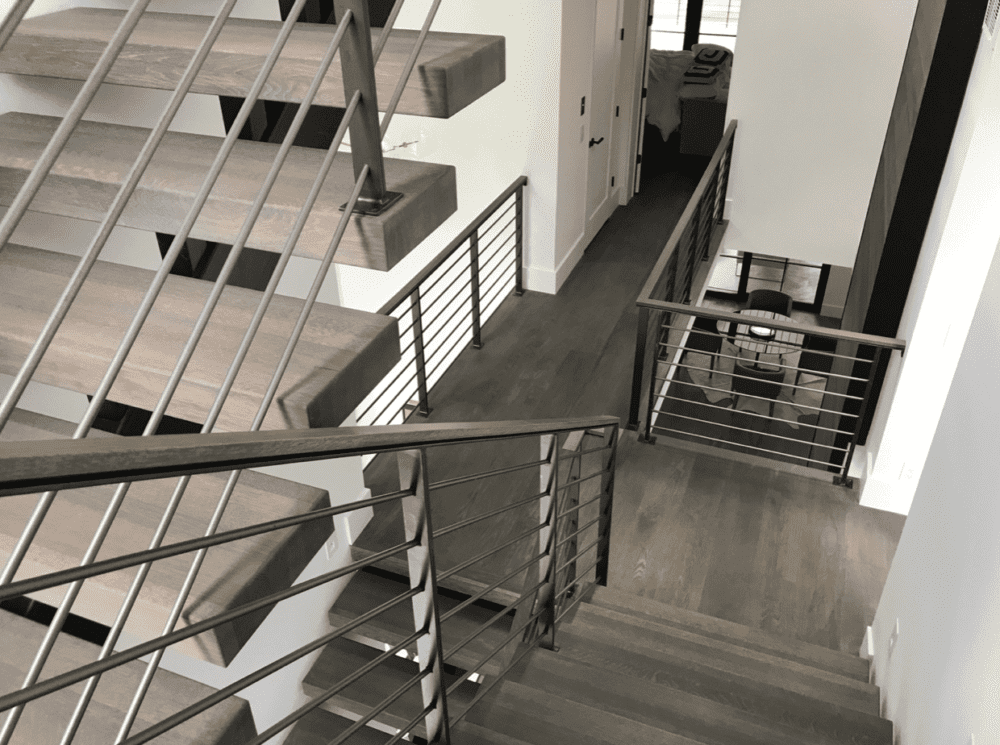
Durability management process
The Innovation and Design Process section also includes the Durability Management Process, which promotes durability of the high-performance building enclosure, its components and systems through appropriate design, materials selection, and construction practices. Prior to construction, the project team will identify risks, responses regarding pests, storm damage and moisture control measures.
The home’s plans include the following features: No paper-backed backer board or carpet in tub, shower and spa areas, no carpet within three feet of the entryway, drain and drain pans for tank water heaters and clothes washers in or over living areas, and exhausting conventional clothes dryers directly to outdoors.
Durability Management requires that the builder have a quality management process in place to ensure installation. A third-party verified these durability conditions.
Innovation or regional design
The home incorporates additional green design and construction features with measurable environmental benefits.

Location and Linkages
Location and Linkages include site selection, which is a very important aspect of sustainable homes. This home isn’t in a floodplain or built within 100 feet of water or wetlands. The infill site with existing infrastructure didn’t replace prime farmland or parkland and build on habitat or threatened or endangered species. Excavated topsoil was reused; runoff was controlled, so it didn’t contaminate storm water sewers or erode hillsides.
Preferred location guidelines encourage the building of LEED homes near or within existing communities. This project was an infill site, which means at least 75 percent of the perimeter immediately borders previously developed land. It was built on a previously developed lot and uses Existing Infrastructure because it is within a half mile of existing water and sewer lines.
Community Resources / Transit
This credit documents location close to basic resources such as arts and entertainment center, bank, convenient store, daycare, fire station, cleaner, library, pharmacy, places of worship and schools. This home achieved Outstanding Community Resources / transit because it is within one-quarter mile of 11, one-half mile of 14 basic resources such as arts and entertainment center, bank, convenient store, daycare, fire station, cleaner, library, pharmacy, places of worship and schools. And it has at least 60 transit rides available nearby per weekday.

Access to open space
The highly desired urban location encourages walking, physical activity, and time spent outdoors. Locate within ½ mile of a ¾ acre of a public open space.
Sustainable Sites
Although the focus of green building is typically on the built structures located on a site, the design of the site and its natural elements can have a significant environmental impact.
Site Stewardship
Although the focus of green building is typically on the built structures located on a site, the design of the site and its natural elements can have a significant environmental impact. Site clearing and earth moving can contribute to considerable runoff, leading to soil erosion and alteration of natural drainage patterns both on and off-site. The home utilized Erosion Controls During Construction.
The Minimizing Disturbed Area of Site credit is automatically granted to high-density construction, in recognition of the fact that compact development enables communities to set aside land for conservation. They placed the home to minimize drainable pattern changes, scheduled construction in phases to minimize disturbance and clearly marked areas that are not to be disturbed. Maintaining vegetation in those areas.
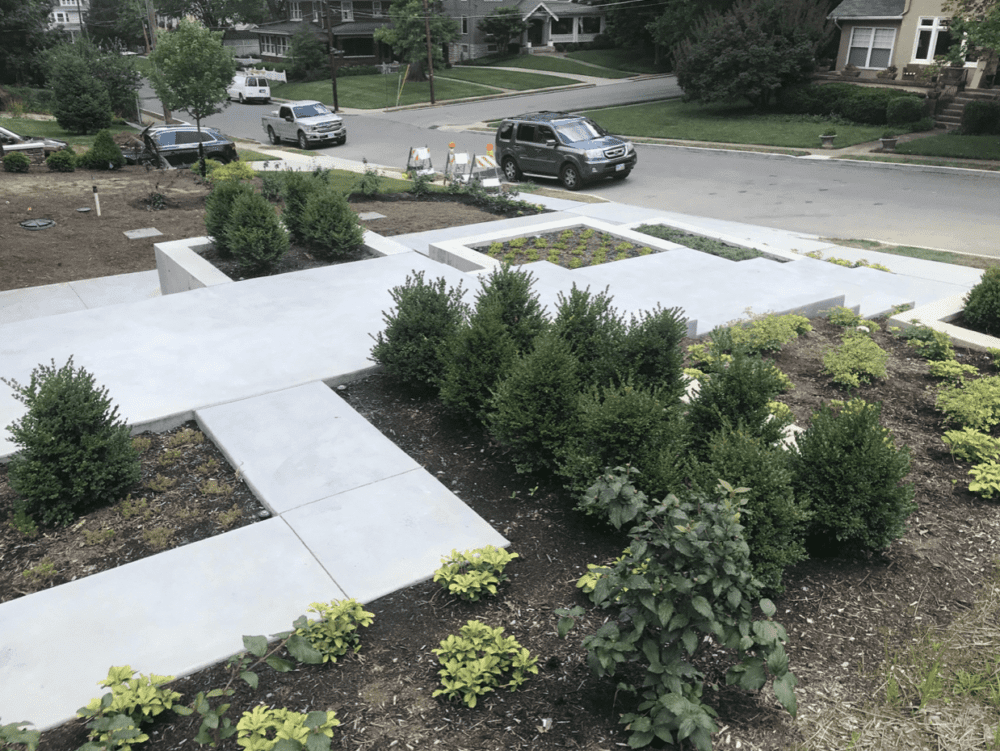
Landscaping
The Sustainable Sites category of credits includes landscaping, non-conventional turf, and drought tolerant plants such as Russian sage, lavender, black-eyed susan, hellebore, hosta and arborvitae. Since the provision and distribution of potable water is costly and energy intensive, particularly during dry periods, a more sensible strategy is to design landscaping that requires less potable water. This is accomplished by managing some of the runoff from the roof with a cistern and including a permeable garden on site.
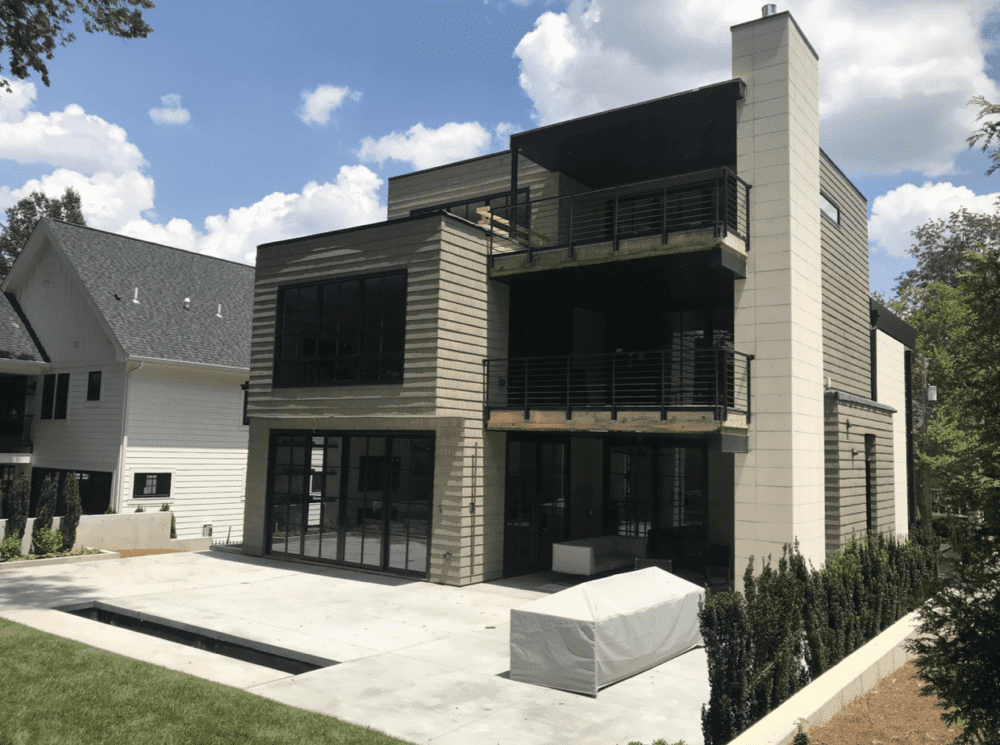
Local Heat Island Effects
The home has a light-colored concrete front driveway and rear patio with a solar reflectance index (SRI) of at least 29.
Surface Water Management
The permeable lot has permanent erosion controls on site and manages run-off from the roof by capturing it in a cistern. The water is used for landscape irrigation.
The Sustainable Sites category of credits includes prerequisites to prevent construction runoff from damaging sewers and preserve topsoil. An infill site minimized disturbed area of the site.
Nontoxic Pest Control
The home integrated nontoxic pest control methods by sealing external cracks, joints, etc. with caulking and installed pest –proof screens. There are no wood-to-concrete connections. Typically, all cellulosic (wood type) material is treated with borate product to 3′ above foundation as an additional pest control measure.
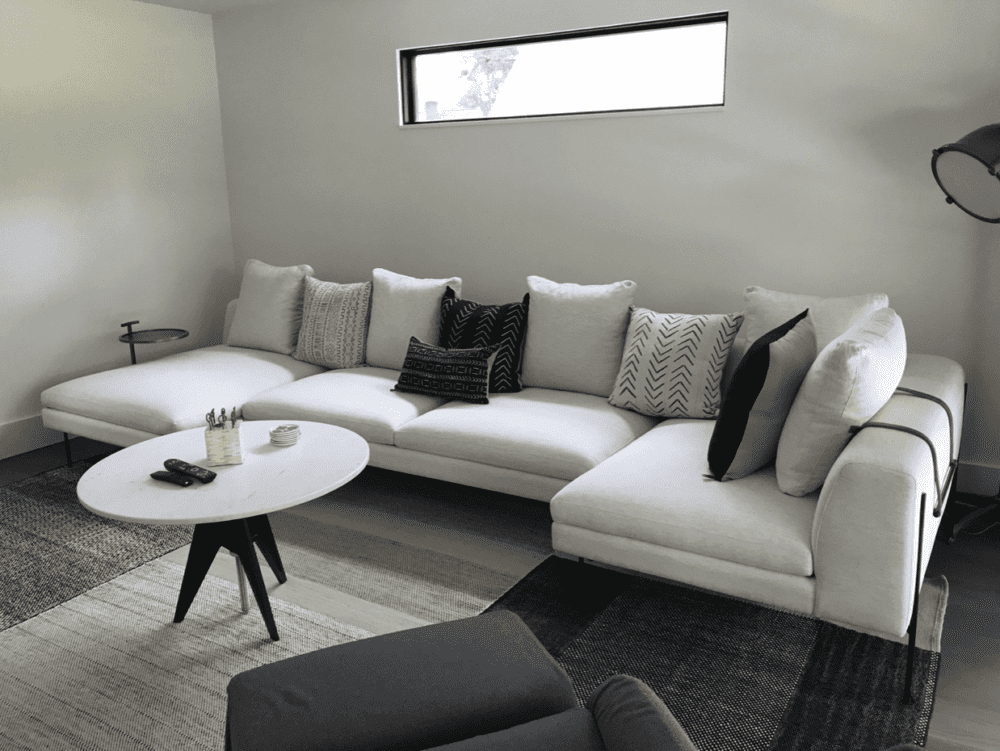
Compact Development
LEED encourages use of compact development patterns on buildable land to conserve land and promote community livability, transportation efficiency and walkability. This residence is located in a High Density area with an average housing density of 10 or more dwellings per acre of buildable land.
Water Efficiency
Water Efficiency is a very important category of LEED. It includes water reuse, which is demonstrated by a rainwater harvesting system, (including surface runoff and/or roof runoff) for landscape irrigation use. The storage tank is sized to hold all the water from a 1-inch rainfall event (equivalent to .62 gallons per square foot of roof area used for capture) or about 80 percent of roof rainwater.
Water efficiency measures included a high-efficiency irrigation system including drip irrigation for 50% of planting beds, separate zone for each type of planting, timers for each zone, and sensors that recognize it has rained and no irrigation is needed. Third party inspection verified this.

Indoor water use
Very High-efficiency fixtures and fittings were specified for this home with an average flow rate is 1.7 gallons per minute, and 1 gallons per flush.
Energy & Atmosphere
Data from the homebuilding industry indicate that roughly 1.5 million new homes are built each year and that the average size of new homes has doubled in the past 50 years. As a result, total U.S. fossil fuel use in homes has been steadily increasing. The average American consumes five times more energy than the average global citizen, ten times more than the average Chinese person, and nearly 20 times more than the average Indian.
Exceptional energy performance measures improved the overall energy performance of the home by meeting or exceeding the performance of an Energy Star labeled home. A Home Energy Rating System (HERS) analysis verification of the energy efficiency of the home will be performed. They are required to exceed the Energy Star standard by reference to the Home Energy Rating System (HERS) analysis verification of the energy efficiency of the home. A rating of 49 will mean that a home is 51% more efficient than a typical home in Cincinnati. Mini-split systems were used throughout the home and because of the tight air sealing, an energy recovery ventilator was installed to provide fresh air and keep the CO2 at low levels.
Residential refrigerant management
No ozone damaging HCFC refrigerants are used in the air conditioning system.
Materials and Resources
The choice of building materials in important for sustainable homebuilding because of the extraction, processing, and transportation they require. Activities to produce building materials may pollute the air and water, destroy natural habitats and deplete natural resources. Construction and demolition wastes constitute about 40% of the total solid waste stream in the United States.

Material-efficient framing
The choice of building Materials and Resources is important for sustainable homebuilding because of the extraction, processing, and transportation they require. Activities to produce building materials may pollute the air and water, destroy natural habitats and deplete natural resources. Construction and demolition wastes constitute about 40 percent of the total solid waste stream in the United States.
Materials and resources included framing efficiencies and off-site panelized construction leading to 88% of on-site waste diverted from landfills. Off-site panelized construction is similar to a factory-built home in that the quality of construction may be higher because the construction isn’t subject to the weather and the possibility of less highly trained carpenters.
If Forest Stewardship Certified tropical wood was used, the country of origin was requested for each wood product. A species is considered tropical if it is grown between the Tropics of Cancer and Capricorn.
Environmentally preferable products
The home’s material selections increased demand for environmentally preferable products and products or building components that are extracted, processed, and manufactured within the region. The flooring for the home was locally sourced and was finished with no VOC coatings.
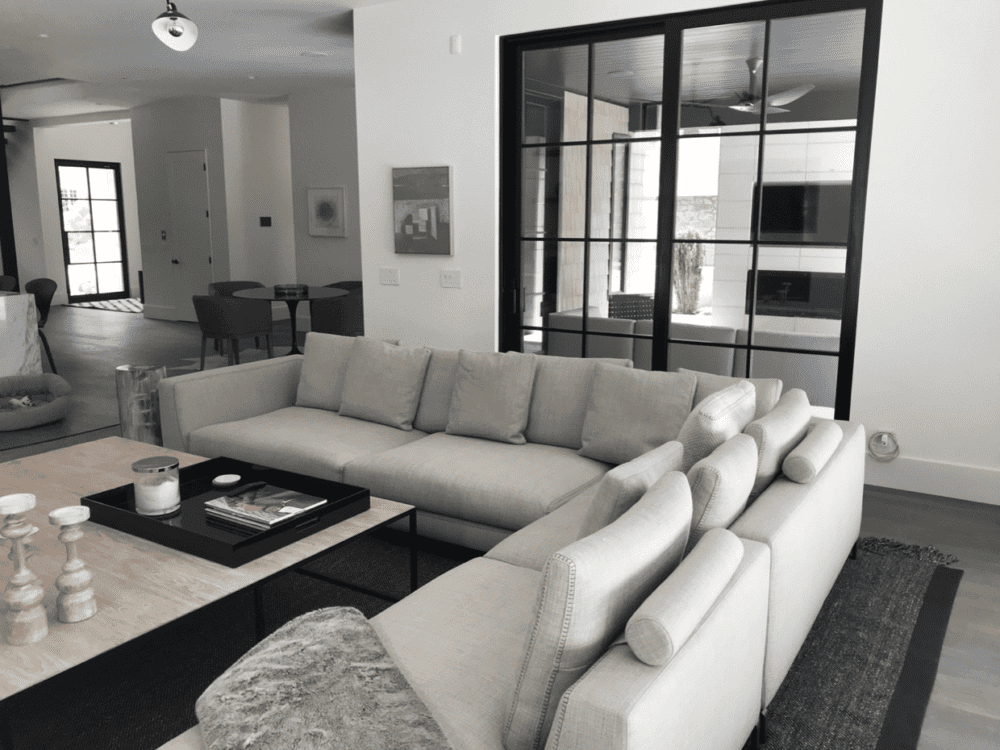
Waste management
Waste management practices require projects to reduce waste generation to a level below the industry norm. Construction waste management planning investigated and documented local options for diversion and measured it, which resulted in diverting at least 25 percent or more from landfills.
Indoor Environmental Quality
Americans spend an average 90% of their time indoors, where levels of pollutants may run two to five times – and occasionally more than 100 times – higher than outdoors, according to the U.S. Environmental Protection Agency. Many of the pollutants found indoors can cause health reactions in the estimated 17 million Americans who suffer from asthma and 40 million who have allergies, contributing to millions of days absent from school and work.
Combustion venting
Indoor Environmental Quality requires combustion venting which limits the leakage of combustion gases into the occupied space of the home. Indoor environmental quality included no unvented combustion appliances, carbon monoxide detectors in rooms that share a door with the garage; all fireplaces have doors, and space/water-heating equipment is designed with closed combustion. This home’s Enhanced combustion venting measures means fireplace design has back-draft prevention, behind glass doors, and catalytic converters.
Moisture control
Controlling indoor moisture levels to provide comfort, reduce risk of mold and increase the durability of the home is part of the moisture load control. They installed dehumidification equipment capable of maintaining humidity at or below 60 percent. They meet ASHRAE Standards and only exhaust air to the outdoors, not the attic or interstitial spaces.
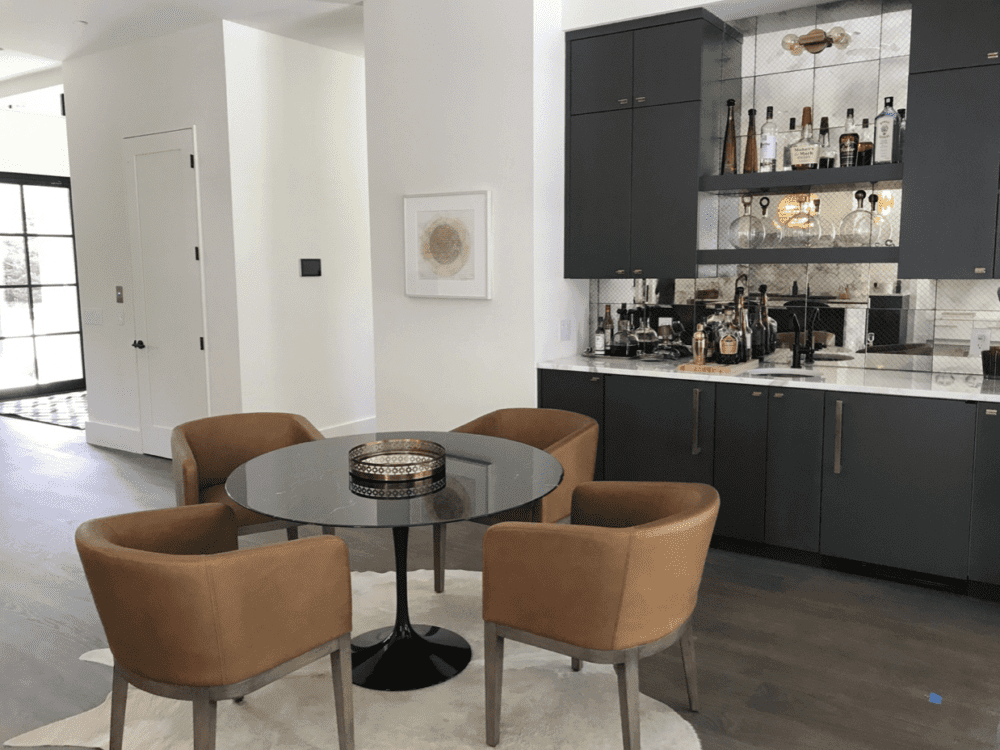
Outdoor Air Ventilation
The home reduces occupant exposure to indoor pollutants by ventilating with outdoor air. Prerequisites included bathroom and kitchen exhausts meeting ASHRAE Standard 62.2 airflow requirements, air is exhausted to outdoors by an Energy Star labeled bathroom exhaust. The home also included enhanced combustion venting measures Third-party performance testing was performed to verify proper installation.
Local exhaust
LEED Homes reduce moisture and exposure to indoor pollutants in kitchens and bathrooms by meeting ASHRAE Standards and only exhaust air to the outdoors, not the attic or interstitial spaces. Enhanced local exhaust uses occupancy sensors, automatic humidistat controller, and automatic timer or continuous fan. It included third-party performance testing.
Distribution of space heating and cooling
There is appropriate distribution of HVAC in the home to improve thermal comfort and energy performance. Room-by-room load calculations ensured ducts are designed accordingly. A typical home which has improved the distribution of space heating and cooling includes a return air opening of 1 square inch per cfm of supply and continuous supply airflow rates in each room tested and confirmed.
Air filtering
Very high performance, MERV 13, filters were installed.
Contaminant control
Indoor contaminants were controlled during construction, and the design allows for contaminant control, which includes space for shoe removal and storage near the primary garage entryway. A preoccupancy flush was performed to rid the home of contaminants that built up during the construction process.
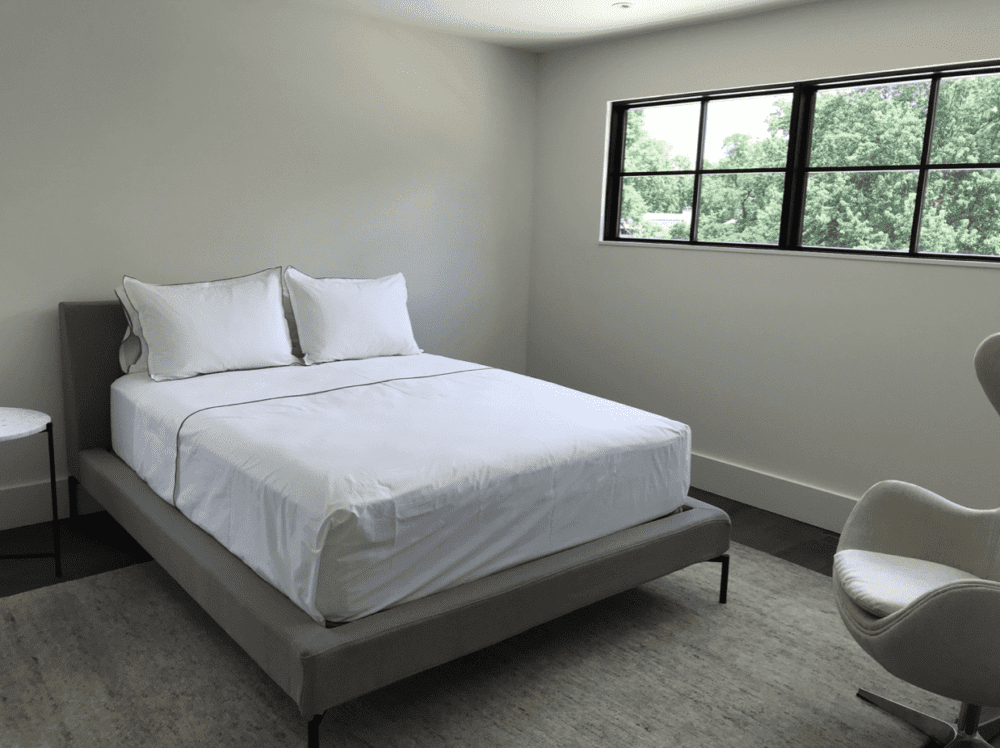
Radon protection
Radon testing was done, and controls put into place if needed.
Garage pollutant protection
The home has no HVAC in the garage to minimize pollutants from the garage. The attached garage penetrations and floor and ceiling joists connections are sealed to prevent pollutants from getting into the home and includes an exhaust fan.
Awareness and Education
Some homebuyers may know very little about green home construction. They may be unaware of the green features in the home, or they may be unfamiliar with how to use and maintain them. Without adequate training, the full benefits of the LEED measures likely will not be achieved.
Education of the homeowner
These homeowners will receive an operator and training manual as well as a one-hour walkthrough. They’ll also receive the LEED checklists and forms, manufacturer’s manuals and cleaning and maintenance guidance. Finally, they will receive two hours of enhanced training.
Awareness and education requirements include this article as part of the LEED Certification. It will be published online at Green Cincinnati Education Advocacy and the local USGBC’s Chapter site once certified. LEED signage was posted on the site.
If you are interested in the architect, interior designer and builder of this LEED home, contact:
WentzDesign
From their site, “WentzDesign is a young, energetic architecture firm which strives to deliver beautiful, creative, and functional solutions for our clients. Our focus is full service custom residential design and development planning, but we also serve many repeat clients within the commercial markets.”
Mike Wentz
7813 Ted Gregory Lane, Suite C, Cincinnati, OH 45242
www.wentzdesign.com
[email protected], 513-745-0420
Aubrie Welsh Interiors
From them, “Aubrie Welsh Interiors focuses on branded environments, commercial and retail experiences as well as select residential projects. Known for our artful and inspired approach to design, we collaborate to develop the vision and bring it to life in thoughtful consumer experiences.”
221 W 9th Street, Studio 1, Cincinnati Ohio 45202
www.aubriewelsh.com
[email protected], 513-703-9531
Bronzie Design and Build
From their site, “We incorporate careful craftsmanship, open and collaborative client communication, and innovative building solutions that enhance both the beauty and value of a home—whether from ground-up or transformational remodels.”
Jim Bronzie
www.bronziedesignbuild.com
[email protected], 513-800-1798
If you would like to learn more about LEED homes in Cincinnati, we suggest you join the local USGBC Chapter and attend their home tours and meetings.
More information is contained in this recent newsletter.
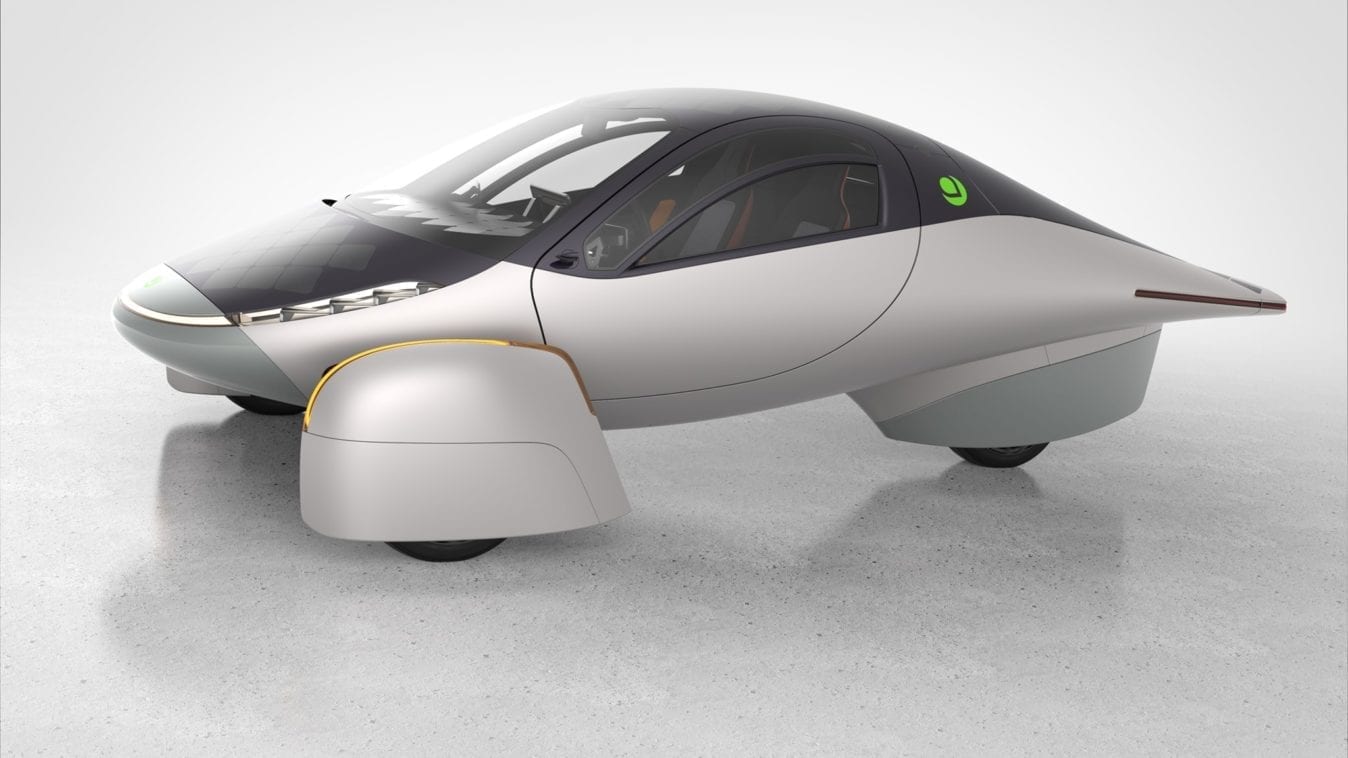
Get $30 off your Aptera Pre-Order
Click this link and you’ll receive a promo code for $30 off an Aptera pre-order. The 2nd Generation Aptera launched Dec. 4, 2020 and is on track to be the first self charging electric vehicle. The two-person, three-wheeler is covered with solar panels which allow self-charging but it also comes with a plug for charging. For every person I refer, I’ll earn a $1,000 credit towards an Aptera. After referring 26 people, I’ll score a free standard edition model. I’m a volunteer Aptera Ambassador, read more about this incredible solution to beautiful design and the ultimate in sustainability! Thanks for your referral, Chuck Lohre, Editor, Green Cincinnati Education Advocacy. #aptera #apteramotors

